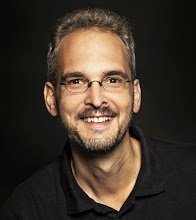We are planning the next edition of Scrum Day on September 23 and 24, 2021 in Stuttgart: into the new country with Scrum. Who wants to share experiences on this motto? We will accept proposals by mid-February.
Motto 2021: Scrum into the new country
Since the beginning of 2020, the world has changed significantly. Disruption, previously perceived as a more theoretical term and diffuse fear of the future, is here. We have learned that it is not a one-off event, but is happening continuously.
There is no time to wait for a new resilient organization to emerge. We must act now. This gives us an opportunity to think about a new country. We cannot delegate responsibility to supposed decision-makers, we all must become actors.
Are you someone, or part of an organization that masters disruption with Scrum or agile ways of working? Would you like to share your experience? Do you need inspiration or help to shape what happened more yourself from now on? Are you the driver behind disruption and innovation and you can describe the new country well? Then help others in similar situations not only to be changed, but also to help shape the future.
We are looking for lectures in German and English. You can submit your talks on the Scrum Day website: https://www.scrum-day.de/call-for-papers.html (Translation with Google: https://translate.google.com/translate?hl=&sl=de&tl=en&u=https%3A%2F%2Fwww.scrum-day.de)
Who's coming to Scrum Day?
The main groups for Scrum Day are:- Scrum newbies: They have only recently been dealing with Scrum. They enjoy the spirit of the agile community. They want to learn a lot. You benefit from the feeling of not being alone.
- Scrum practitioners in (mostly) large organizations: They have had some good experiences with Scrum, but also experienced some disappointments. They are looking for tips for difficult situations. They are part of the agile community in a company.
- Scrum consultants, coaches: They have been on the road for years in terms of agility and have experience with different customer groups. They want to share experiences with others. They are interested in certain details. They want to learn in order to be able to support their customers even better. They organize regional meetings (agile user groups, meetups, conferences).
- Pioneers, visionaries: A small part of our visitors is looking forward to sharing with others. These people have a clue where the journey is going. In conversations, they want to find out more about it. They are part of international networks.
Each group brings different experiences. Who do you want to address with your talk? With what experience, with what feeling should the visitor go out of the session? What is the next step, the call to action?
How do we choose lectures?
We take into account all submissions submitted on the Scrum Day website by February 15, 2021. Experience has shown that most of the proposals come just before this date. The orga team reviews this list and prepares the community voting (March 15 until April 15, 2021).
With the voting among those people who have already bought a ticket, we want to get first feedback. But voting results are not the only criterion. What thoughts we are about when choosing, I wrote down last year (in German).
Still uncertain?
If you're unsure whether to submit a talk, do it anyway.
Have you never given a talk in front of a larger audience? For others, there was also a first time. The visitors at Scrum Day are friendly, understanding and patient as long as the mindset is right. If you want, we will provide you with a mentor who will accompany you.
You think your story is uninteresting and not worth a presentation? Test your idea in conversation with others. See if there are books on your idea or history. Check out the reviews. This gives you an impression of how such an idea changes people. Many things that the agile community has become accustomed to are completely new to people outside of it. Test your presentation at an agile user group or at a web session.
You don't know how to describe a lecture well? The proposals we receive are never perfect. Often someone is too deep in the subject. We contact the lecturers and help with the revision. There are many hints on how to submit a good proposal. Get smart. Here are two articles about it:
- Karolina Szczur: How to write a successful conference proposal, medium.com, published on 1. February 1, 2017, available at https://medium.com/@fox/how-to-write-a-successful-conference-proposal-4461509d3e32
- Dave Cheney: How to write a successful conference proposal, personal web site/personal blog, published on February 12, 2017, available at https://dave.cheney.net/2017/02/12/how-to-write-a-successful-conference-proposal
Your lecture has nothing to do with scrum? We want to go to the new country with Scrum. There are so many things where small, agile teams can tackle. Your team wasn't officially a scrum team? Perhaps no one knew what Scrum was. But if you have acted agilely, we want to hear from you. Apply anyway. Maybe you know what to do. Show us where agile teams should look closer. Apply.
Questions? Currently, the team for the program consists of the following people:
Please share this call. Talk to people whose story you want to hear on Scrum Day. They probably don't even know about this conference.


Kommentare
Kommentar veröffentlichen